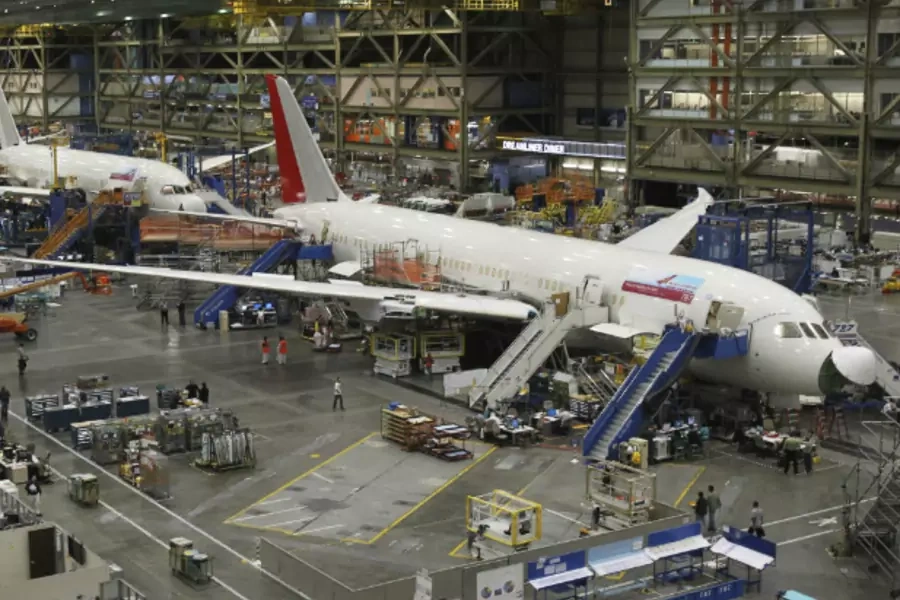Morning Brief: Export-Import Bank Chairman Argues for Renewal

More on:
The charter of the U.S. Export-Import Bank (“Ex-Im”) set to expire on May 31. Congress is considering renewing the charter, but debate remains over the renewal period and Ex-Im’s loan limit. Fred Hochberg, Ex-Im’s chairman, discussed the need for a multi-year Ex-Im renewal with The Hill: “If we only have a one-year that signals to exporters that we’re an off again and on again enterprise. That has long-term impact. We’re the backstop to a fragile banking system. We’re taking the backstop and making that more fragile as well.” He summed up Ex-Im’s benefits to U.S. competitiveness by saying, “It sustains and creates jobs and does it at no cost to the taxpayer. Pays for itself and makes a profit.”
CFR’s Ted Alden discusses the issues facing lawmakers as they consider Ex-Im reauthorization, including the increasingly aggressive actions of developing countries to finance their exports and Ex-Im’s efforts to match them.
Building Ethical Supply Chains
The Economist describes how global businesses such as Nike are building ethical supply chains. Governments often fail to protect workers. NGOs spotlight poor working conditions, but usually global firms must drive change. While audits and compliance programs can identify trouble spots, firms must form collaborative relationships with suppliers, and help build their capabilities. Lean, just-in-time production and last minute design changes force suppliers to ramp production up and down quickly. Many rely upon excessive overtime to handle this volatility.
International trade and investment. Read more from leading analysts on the debate over next steps in U.S. trade policy.
Infrastructure
Should States Privatize Infrastructure?
The Washington Post discusses the benefits and risks of privatizing infrastructure. States can either lease existing infrastructure to private firms—collecting a lifetime’s worth of tolls in one lump sum—or use private companies to build new infrastructure. While the prior approach is more common in the United States, the latter is attracting new attention, and is relatively common in other developed nations such as Australia, France and Spain. Studies have shown that private-led construction projects are completed quicker and cheaper than projects overseen by the government, but states need to appropriately structure complex, multi-decade financial agreements.
Renewing America recently launched “Policy Initiative Spotlight,” a new feature that identifies and discusses important policy innovations that could help rebuild U.S. economic strength. The first policy highlighted was Chicago’s $7 billion infrastructure plan, which includes an investment trust designed to funnel private money towards public infrastructure.
Infrastructure. Read more on how upgrading the nation’s aging network of roads, bridges, airports, railways, and water systems is essential to maintaining U.S. competitiveness.
Education and Human Capital
Autism Continues to Rise
The Centers for Disease Control and Prevention estimates that one out of every eighty-eight American children has an autism spectrum disorder (ASD). ASDs are becoming more common (EducationWeek); the prevalence of ASD doubled from 2002 to 2008. While the cause of the rapid rise in ASD diagnoses is still unclear, it is clear that K-12 schools will need to increase investment in special education to help the greater number of children exhibiting signs of ASD.
Education and human capital. Read more from experts discussing ways to improve U.S. education and immigration policies.
Innovation
How Tech Markets Evolve
Technology markets evolve along a curve with four phases, argues TechCrunch. The first phase is the “Hype Cycle,” which causes markets to rise and peak at the perceived market opportunity. Then in phase two, “Facing Reality,” the market declines. From this trough, the technology will then either fail to grow or it will begin the “Liftoff” phase, ultimately growing to its real market opportunity. Understanding this dynamic will help investors target funding to promising, but undervalued markets.
Innovation. Read more on how the U.S. capacity to innovate could play a chief role in economic growth.
Steven J. Markovich holds an MBA from the University of Chicago's Booth School of Business.
More on:
 Online Store
Online Store